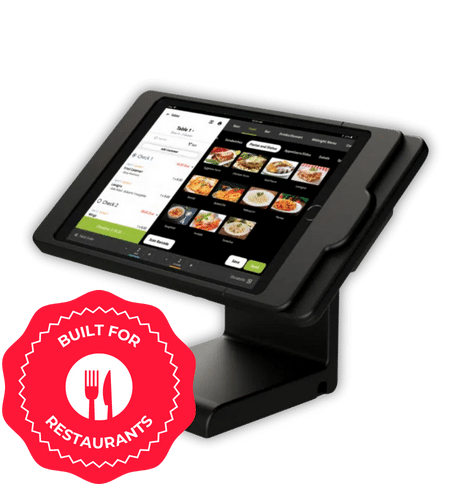5 must-have features in Restaurant POS Software apps for fast-paced restaurants
How POS System Functions: A Comprehensive Guide for Entrepreneur

Comprehending the Elements of a POS System

How Sales Transactions Are Processed
When a client chooses to buy, the sales purchase launches a collection of organized actions within the POS system. First, the cashier inputs the things being purchased, which are scanned through a barcode visitor or manually gotten in. This action fetches product details, including rates and suitable tax obligations, from the system's database.Next, the customer exists with the complete quantity due. The POS system after that refines the settlement, whether through cash money, bank card, or mobile repayment techniques (Restaurant POS Software). For digital settlements, the POS securely communicates with settlement cpus to accredit and verify the transaction.Once the repayment is confirmed, the system creates an invoice, which can be printed or sent digitally. This invoice functions as receipt for the consumer. The purchase data is recorded in the system, making certain exact sales records and financial monitoring for the organization.
Supply Management and Monitoring

Effective stock administration and tracking are necessary parts of a POS system, as they assure that companies preserve excellent stock degrees and minimize inconsistencies. A robust POS system allows for real-time inventory updates, showing sales and returns instantly. This allows company owner to keep an eye on stock levels precisely, ensuring that prominent products are readily offered while stopping overstocking of much less preferred products.Additionally, advanced POS systems use features such as automated supply signals and reorder suggestions, streamlining the purchase process. Barcoding and RFID innovation enhance precision in tracking inventory activity, minimizing human mistake. Substantial reporting devices provide insights right into supply turn over rates, helping businesses make notified decisions about buying and item offerings. Inevitably, effective inventory administration via a POS system not just enhances operational performance however likewise improves client complete satisfaction by guaranteeing item availability.
Evaluating Consumer Data and Insights
Customer information analysis offers as an effective device for businesses making use of a POS system (Restaurant POS Software). By examining and gathering purchase information, companies can reveal useful insights about consumer actions and preferences. This analysis allows them to recognize purchasing patterns, peak shopping times, and popular items, thus notifying supply choices and marketing strategies.Additionally, businesses can segment their customer base, enabling personalized marketing initiatives that deal with particular demographics or purchasing routines. Understanding client commitment patterns also aids in developing targeted promos and benefits programs.The data amassed from a POS system can also disclose understandings into customer responses, enabling businesses to make enlightened decisions relating to item offerings and solution enhancements. Eventually, leveraging consumer information efficiently can boost the general purchasing experience, foster consumer complete satisfaction, and drive income growth
Benefits of Executing a POS System
Regularly Asked Questions
What Sorts Of Businesses Can Take Advantage Of a POS System?
Different services benefit from a POS system, consisting of retail shops, dining establishments, beauty salons, and e-commerce systems. These systems simplify deals, supply administration, and client data, improving operational performance and improving client experience across diverse sectors.
Just how Much Does a POS System Normally Expense?
The cost of a POS system typically varies from a few hundred to a number of thousand dollars, relying on features, equipment, and software program. Companies have to consider recurring costs for maintenance, assistance, and transaction handling when budgeting.
Can I Incorporate a POS System With Existing Software?
Incorporating a POS system with existing software application is often viable. Many systems more info supply APIs or integrated compatibility features, enabling businesses to improve procedures and boost capability by attaching various software applications properly.
What Training Is Required for Staff to Make Use Of a POS System?
Educating for personnel to use a POS system commonly consists of understanding software program performances, refining transactions, taking care of supply, and handling client communications. Practical presentations and hands-on practice improve efficiency and self-confidence in operation the system properly.
What Happens if the Web Goes Down While Using a POS System?
Transactions might be interrupted if the web goes down throughout POS system usage. Several systems provide offline capabilities, permitting standard operations to proceed, yet complete functionality, including real-time inventory updates, will certainly be limited. A Point of Sale (POS) system is made up of a number of essential parts that function with each other to assist in deals and manage organization operations. Reliable stock monitoring and monitoring are essential parts of a POS system, as they assure that services maintain perfect stock levels and lessen disparities. Consumer data analysis serves as an effective device for companies utilizing a POS system. Understanding client commitment patterns also assists in creating targeted rewards and promos programs.The data gleaned from a read more POS system can likewise disclose insights right into customer comments, allowing organizations to make educated choices pertaining to product offerings and service enhancements. Implementing a POS system offers countless advantages that can considerably boost company operations.